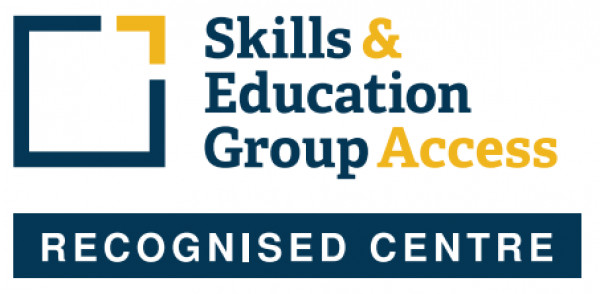International Business Strategy
International Business Strategy draws together and applies ideas from many of the disciplines and fields of study which contribute to a broad understanding of business. Some of the ideas may already be familiar to students who have previously studied courses in marketing, economics, management theory or organizational behaviour.
Crucially though, through an understanding of strategy and strategic management, we can gain an insight into how these individual disciplines interact. The course is designed for all those intending a business career and for those with an interest in how contemporary organisations operate. Business strategy is not simply the province and responsibility of senior level management decision makers.
The ideas which underpin International Business Strategy can be applied at many levels in the business organisation to help ensure that individual business units or departments maintain an effective contribution to the overall success of the business.
Qualification: International Business Strategy
On successful completion of your course, you will receive a Stonebridge Associated Colleges Certificate of Completion.
Your course certificate will also state the number of CPD points/hours the course is eligible for.
There is no experience or previous qualifications required for enrolment on this course. It is available to all students, of all academic backgrounds.
All course fees, inclusive of all payment plans including our Premium Credit Limited option, must be settled before certification can be ordered.
*You will have access to the course for 24 months.
Unit 1: Internal Analysis - An Integrated Approach
Introduction
Objectives
- Section 1: Activity-based Analysis
Introduction
1.1 Problems of ambiguity and uncertainty
1.2 An introduction to the activity-based view
1.3 Using activity-based analysis
1.4 Business process re-engineering
Summary
- Section 2: New Product Development Analysis
Introduction
2.1 New product development process
2.2 Organisation of research and development
2.3 First mover advantages
Summary
- Section 3: SWOT Analysis
Introduction
3.1 Traditional SWOT analysis
3.2 Revised SWOT analysis
Summary
- Section 4: Integration through Strategic Architecture
Introduction
4.1 The purpose and value of strategic architecture
4.2 Generating strategic architecture
Summary
Unit Summary
Unit Review Activities
Commentaries on review activities
References
Further Reading
Unit 2: Organisational Structure and Strategic Control Systems
Introduction
Objectives
- Section 1: Organisational Structure
Introduction
1.1 The role of structure
1.2 Implications of structural factors
1.3 Choices of organisational structures
Summary
- Section 2: Strategic Control Systems
Introduction
2.1 Role of control systems
2.2 Agency theory
2.3 Governance mechanisms
Summary
Unit Summary
Unit Review Activities
Commentaries on review activities
References
Further Reading
Unit 3: Corporate Strategies
Introduction
Objectives
- Section 1: Strategies of Integration
Introduction
1.1 Integration, costs and governance
1.2 Vertical integration
1.3 Horizontal integration
1.4 Virtual integration: licensing and franchising
Summary
- Section 2: Strategies of Merger, Acquisition and Diversification
Introduction
2.1 Mergers and acquisitions
2.2 Diversification
2.3 Diversification and performance
Summary
- Section 3: Strategies of Collaboration
Introduction
3.1 The foundations of collaboration
3.2 Forms of collaborative strategy
3.3 The development and management of collaboration
Summary
Unit Summary
Unit Review Activities
Commentaries on review activities
References
Further Reading
Unit 4: The Global Dimension of Strategic Management
Introduction
Objectives
- Section 1: Internationalisation of the World Economy
Introduction
1.1 Modern international trade
1.2 Implications of global shift
1.3 National context and competitive advantage
Summary
- Section 2: Global Business Strategies
Introduction
2.1 Global expansion
2.2 Choosing a globalisation strategy
2.3 Choice of foreign entry mode
Summary
- Section 3: Globalisation and Culture
Introduction
3.1 The concept of culture
3.2 Cultural forms
Summary
Unit Summary
Unit Review Activities
Commentaries on review activities
References
Further Reading
Assessment Method
After each lesson there will be a question paper, which needs to be completed and submitted to your personal tutor for marking. This method of continual assessment ensures that your personal tutor can consistently monitor your progress and provide you with assistance throughout the duration of the course.
What's Included
- All study materials
- Study Guide
- Full Tutor and Admin support
International Business Strategy draws together and applies ideas from many of the disciplines and fields of study which contribute to a broad understanding of business. Some of the ideas may already be familiar to students who have previously studied courses in marketing, economics, management theory or organizational behaviour.
Crucially though, through an understanding of strategy and strategic management, we can gain an insight into how these individual disciplines interact. The course is designed for all those intending a business career and for those with an interest in how contemporary organisations operate. Business strategy is not simply the province and responsibility of senior level management decision makers.
The ideas which underpin International Business Strategy can be applied at many levels in the business organisation to help ensure that individual business units or departments maintain an effective contribution to the overall success of the business.
On completion of your course, you will receive a certificate:
Stonebridge Associated Colleges: International Business Strategy Diploma
International Business Strategy Diploma issued by Stonebridge Associated Colleges, to view a sample of the college’s award, please click here.
Professional Membership
On completion of this course you will be eligible to join the following Professional Associations(s):
On successful completion of your course your qualification is awarded. You will receive an attractively presented Diploma or Certificate issued by Stonebridge Associated Colleges, this will also allow you to use the letters SAC. Dip. or SAC. Cert. after your name.
Stonebridge Associated Colleges is one of the leading (and biggest) distance education colleges in the U.K and internationally. We have many thousands of students studying with us at any one time from locations all over the world. Our diplomas will always count towards your future, and will improve your prospects of future employment or higher level study etc. by proving that you have studied to a certain level, that you have proficiency in your chosen subjects and that you are interested in your field of choice. Education is always an investment in your future and you will find this to be the case with our qualifications in your jurisdiction.
Unit 1: Internal Analysis - An Integrated Approach
Introduction
Objectives
- Section 1: Activity-based Analysis
Introduction
1.1 Problems of ambiguity and uncertainty
1.2 An introduction to the activity-based view
1.3 Using activity-based analysis
1.4 Business process re-engineering
Summary
- Section 2: New Product Development Analysis
Introduction
2.1 New product development process
2.2 Organisation of research and development
2.3 First mover advantages
Summary
- Section 3: SWOT Analysis
Introduction
3.1 Traditional SWOT analysis
3.2 Revised SWOT analysis
Summary
- Section 4: Integration through Strategic Architecture
Introduction
4.1 The purpose and value of strategic architecture
4.2 Generating strategic architecture
Summary
Unit Summary
Unit Review Activities
Commentaries on review activities
References
Further Reading
Unit 2: Organisational Structure and Strategic Control Systems
Introduction
Objectives
- Section 1: Organisational Structure
Introduction
1.1 The role of structure
1.2 Implications of structural factors
1.3 Choices of organisational structures
Summary
- Section 2: Strategic Control Systems
Introduction
2.1 Role of control systems
2.2 Agency theory
2.3 Governance mechanisms
Summary
Unit Summary
Unit Review Activities
Commentaries on review activities
References
Further Reading
Unit 3: Corporate Strategies
Introduction
Objectives
- Section 1: Strategies of Integration
Introduction
1.1 Integration, costs and governance
1.2 Vertical integration
1.3 Horizontal integration
1.4 Virtual integration: licensing and franchising
Summary
- Section 2: Strategies of Merger, Acquisition and Diversification
Introduction
2.1 Mergers and acquisitions
2.2 Diversification
2.3 Diversification and performance
Summary
- Section 3: Strategies of Collaboration
Introduction
3.1 The foundations of collaboration
3.2 Forms of collaborative strategy
3.3 The development and management of collaboration
Summary
Unit Summary
Unit Review Activities
Commentaries on review activities
References
Further Reading
Unit 4: The Global Dimension of Strategic Management
Introduction
Objectives
- Section 1: Internationalisation of the World Economy
Introduction
1.1 Modern international trade
1.2 Implications of global shift
1.3 National context and competitive advantage
Summary
- Section 2: Global Business Strategies
Introduction
2.1 Global expansion
2.2 Choosing a globalisation strategy
2.3 Choice of foreign entry mode
Summary
- Section 3: Globalisation and Culture
Introduction
3.1 The concept of culture
3.2 Cultural forms
Summary
Unit Summary
Unit Review Activities
Commentaries on review activities
References
Further Reading
Assessment Method
After each lesson there will be a question paper, which needs to be completed and submitted to your personal tutor for marking. This method of continual assessment ensures that your personal tutor can consistently monitor your progress and provide you with assistance throughout the duration of the course.
What's Included
- All study materials
- Study Guide
- Full Tutor and Admin support
Our Advisors.
Our team of course advisors are keen to help.
Call us now on 0121 392 8288
Alternatively, please complete the form below and we’ll get back to you as soon as possible.
80,000 learners.
650 courses.
flexible payment
options.
Our student support team is here for you.























